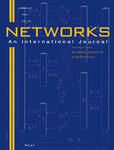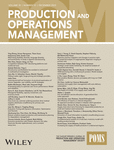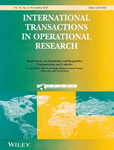The Harold W. Kuhn Award
Each year starting in 2006, the journal Naval Research Logistics awards the Kuhn Prize to the best paper(s) published over the past three years. The purpose of the award is to recognize and reward outstanding research published in the Journal.
The award is named after the late Harold W. Kuhn, Professor Emeritus of Mathematics at Princeton University who won the 1980 John von Neumann Theory Prize along with David Gale and Albert W. Tucker. He is best known for the Karush–Kuhn–Tucker conditions and his contributions to the theory of games.
Papers are selected by members of the Journal’s Editorial Board, and the winning paper is selected by a two- or three-person committee.
Kuhn Award 2023
Committee: Saif Benjaafar (chair), Bin Hu, and Negin (Nicki) Golrezaei
The paper is commendable for its integration of an epidemiological model with an optimization model to support the strategic location of COVID-19 mass vaccination sites. The paper provides a scalable algorithm for efficiently computing solutions. It demonstrates, through numerical experiments that are carefully calibrated with real-world data, that optimized site locations can reduce mortality by 20%, saving 4,000 additional lives over three months and ensuring equitable distribution across states. The proposed approach has applicability to potential future pandemic diseases.
Kuhn Award 2022
Committee: John Birge (chair), Kevin Glazebrook, and Sila Cetinkaya
The paper has a solid theoretical foundation and precisely and reasonably formed modeling to address a timely and important topic, to contain compelling numerical evidence of the model’s value, and to provide valuable material, including an online tool, for future applications.
A model of supply-chain decisions for resource sharing with an application to ventilator allocation to combat COVID-19
Kuhn Award 2021
Committee: Huseyin Topaloglu (chair), Larry Snyder, Alejandro Toriello, Serhan Ziya
In ride-sharing systems, batching ride requests for a certain window before matching them to drivers increases the pool of options available for each driver and helps prevent the so-called wild goose chase, where drivers are matched to riders far from them. Batched matches are, by definition, also a part of passenger pooling services. The present paper studies an equilibrium model for ridesharing with passenger pooling. The levers of the platform are the price and the batching window, where the riders react negatively to increases in either of the two. Using a fluid formulation, the authors establish the existence of a stable equilibrium. Ridesharing systems became an important application area for operations research tools over the last decade. The paper demonstrates the power of stylized models in predicting market behavior and provides a foundational model that other researchers can build on to include other practical considerations in ride-sharing systems.
Kuhn Award 2020
Committee: René Caldentey, Susan Lu and Fernando OrdóñezThe problem considered in this paper is of prime importance in multi-modal transportation. It deals with the optimization of barge utilization between a container port and the hinterland. The relevance of the problem is particularly significant in countries like the Netherlands, where barges must be used to transport containers inland. If only trucks were used to transport containers, one would see a continuous line of trucks between the port of Rotterdam and the German border, for example. Barges also produce little polluting emissions and are therefore environment friendly. The authors model the problem of optimizing barge utilization as an integer linear program, which is then solved by means of a heuristic that exploits theoretical properties. The heuristic yields excellent results: it provides 20% savings with respect to the current situation, and it also yields optimal or near-optimal results on a set of test instances.
The paper studies a classical problem with a new twist. The Lagrangian relaxation approach was novelly adopted to generate lower bounds via the solution of a single-dimensional dynamic program. The comprehensive numerical studies show that the constructed heuristic policy performs extremely well.







